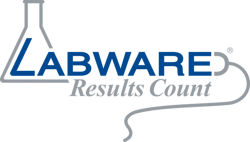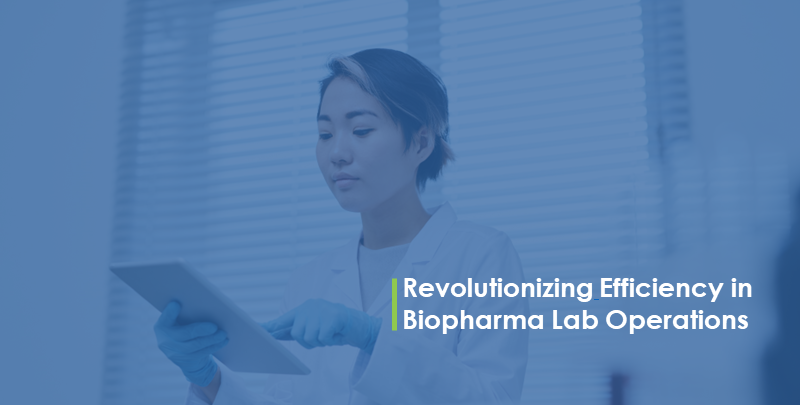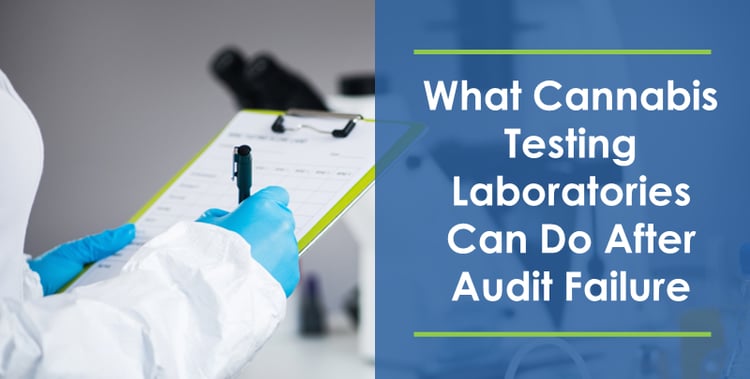
Cannabis testing laboratories are essential in protecting the safety and quality of cannabis products. Cannabis testing helps identify and quantify the levels of cannabinoids (such as THC and CBD) and the presence of harmful contaminants like pesticides, heavy metals, mold, and bacteria, safeguarding consumers from health risks. The cannabis plant's chemical diversity, variability in cannabinoid concentrations, difficult contaminant detection, evolving industry practices, and the continuous emergence of new compounds make testing a complex endeavor.
Meeting these challenges requires a multidisciplinary approach and ongoing advancements in analytical techniques and standardization efforts. Regulatory nuances present additional hurdles for the laboratory staff who know government regulators can suspend or revoke cannabis testing laboratory licenses when they find significant deficiencies during inspections. Audit findings can include failure to meet accreditation requirements, insufficient staffing, uncalibrated equipment, and incorrect test results. Regulatory audit failures present significant challenges to the laboratories, which can undermine their ability to do business. Cannabis testing facilities can take actionable steps after facing audit failures to regain compliance, rebuild trust, and strengthen their commitment to industry standards.
Conduct a Thorough Internal Review
In the aftermath of an audit failure, cannabis testing laboratories must embark on a thorough internal review of their operational processes. This process should involve examining each facet of the laboratory's operations, ranging from sample intake and preparation to analytical testing, data recording, and reporting procedures. The primary objective is to pinpoint the areas where auditors identified non-compliance. This comprehensive review allows laboratory management and staff to delve deeply into the intricacies of their workflow, seeking a nuanced understanding of the issues that led to the audit failure. Beyond merely identifying the symptoms of non-compliance, it is crucial to scrutinize the root causes behind these failures. This activity involves looking beyond immediate procedural lapses to understand the systemic or structural factors contributing to non-compliance. By conducting this detailed internal review, laboratories can lay the groundwork for a strategic and targeted corrective action plan, addressing the visible shortcomings and the underlying factors that may have contributed to the compliance lapses. This reflective analysis sets the stage for a more robust and resilient operational framework in the future.
Implement Corrective Actions
After the internal review, the next pivotal step for cannabis testing laboratories is to formulate a comprehensive corrective action plan that serves as a roadmap for rectifying identified issues and fortifying the laboratory's compliance framework. Insights from the internal review will help craft a meticulously detailed plan that systematically addresses each non-compliance issue. Key laboratory staff should dissect each issue and outline actions to rectify and mitigate the root causes. The corrective action plan should encompass a step-by-step approach, defining the tasks, responsibilities, and timelines for implementing the necessary changes. Prioritizing the most critical issues and allocating resources efficiently to expedite the corrective measures is essential. Transparency and accountability should be vital components of the plan, ensuring all stakeholders know the necessary actions to address non-compliance.
The plan should extend beyond immediate rectification efforts to incorporate preventive measures. Laboratories must establish proactive protocols and enhanced quality control mechanisms to forestall the recurrence of similar incidents in the future. Continuous monitoring and regular assessments should be integral to the corrective action plan, fostering a culture of vigilance and responsiveness within the laboratory. Through the implementation of this detailed and strategic corrective action plan, cannabis testing laboratories can not only rectify past non-compliance but also fortify their operations, ensuring sustained adherence to regulatory standards and bolstering trust among stakeholders.
Invest in Education, Training, and Automation
Elevating laboratory staff competency through a commitment to ongoing training and education is a fundamental pillar in fortifying the capabilities of cannabis testing laboratories. It is imperative to prioritize the continuous development of employees, ensuring they remain well-versed in the dynamic landscape of current regulations, advanced testing methodologies, and evolving quality control procedures. This investment in the professional growth of the workforce serves as a strategic imperative, empowering staff to navigate the intricacies of compliance and stay abreast of industry best practices. Enforcing robust quality assurance and quality control measures is essential for maintaining accuracy and precision in testing methodologies.
In tandem with the emphasis on human resources, the integration of cutting-edge automation technologies emerges as a complementary strategy to bolster the integrity of laboratory operations. Adopting a Laboratory Information Management System (LIMS) like LabWare GROW represents a noteworthy leap forward in this pursuit. A LIMS streamlines and automates various aspects of laboratory workflows and is a robust repository for crucial data. This technological intervention ensures the authenticity and reliability of laboratory data by minimizing the potential for human error and enhancing data management efficiency.
The synergistic approach of investing in human resources through training and education and integrating automation technologies like LIMS creates a robust framework for mitigating compliance lapses. Well-informed and proficient staff, equipped with the latest knowledge and supported by automated systems, are better positioned to adhere to regulatory requirements, conduct precise analyses, and uphold the highest quality control standards. This holistic strategy mitigates the risk of compliance lapses and fosters a culture of excellence, innovation, and reliability within cannabis testing laboratories.
Enhance Documentation Practices
Strengthening documentation processes within cannabis testing laboratories is paramount to establishing a foundation of transparency and traceability throughout the testing lifecycle. This step involves a meticulous approach to documenting every step in the testing process, starting from sample collection and extending through the analysis phase to the final reporting stage. By entering these critical steps comprehensively, laboratories not only enhance their compliance posture but also instill a sense of confidence in the reliability and accuracy of their results.
At the forefront of this initiative is the establishment of precise and standardized protocols for documentation. These protocols should delineate the details that must be recorded at each stage, leaving no room for ambiguity. The lab should record specific elements such as sample origin, storage conditions, testing methodologies employed, instrument calibrations, and any deviations encountered during the analysis process. By meticulously capturing this information, laboratories create a transparent record that facilitates accountability and traceability—a crucial aspect in ensuring the verifiability of relevant activities.
This commitment to robust documentation goes beyond regulatory adherence; it is a powerful tool for building stakeholder trust. Clients, regulatory bodies, and industry partners are increasingly discerning when choosing testing laboratories. The ability to showcase a transparent and comprehensive documentation trail underscores the commitment to quality. It assures stakeholders that the lab conducts every testing process with precision and diligence.
A LIMS reinforces documentation processes by promoting data centralization, electronic data capture, automation, standardization, version control, audit trails, instrument integration, compliance, and security. These features contribute to more efficient, accurate, and compliant laboratory documentation practices.
In essence, strengthening documentation processes is not merely a compliance measure but a strategic investment in the credibility and reliability of the laboratory's results. By embracing transparency and traceability through meticulous documentation, cannabis testing laboratories position themselves as trustworthy data custodians, fostering a reputation for excellence and precision within the dynamic landscape of the cannabis industry.
Seek Expert Guidance
Engaging with regulatory experts or consultants is a strategic initiative for laboratories striving to align their operations with industry standards and regulations. These experts bring in-depth regulatory knowledge, encompassing the latest industry standards, guidelines, and regulations relevant to laboratory processes, such as data integrity, sample handling, documentation practices, and quality assurance. By leveraging this specialized expertise, laboratories can proactively address regulatory requirements and establish robust processes, adhering to best practices to ensure compliance.
Regulatory consultants further provide customized compliance strategies by assessing the unique aspects of each laboratory, including its organizational structure, processes, and specific work nature. This tailored approach ensures that the laboratory meets minimum regulatory requirements and optimizes its operations for efficiency and quality. Additionally, regulatory experts conduct thorough assessments to identify potential risks and areas of non-compliance within laboratory processes, enabling corrective actions and preventive measures. Through training programs, these consultants empower laboratory staff with the necessary knowledge and skills for maintaining compliance, covering regulatory requirements, proper documentation practices, and industry trends. Overall, this engagement fosters a compliance-centric culture, contributing to the continuous improvement of laboratory operations and establishing reliable documentation processes aligned with regulatory expectations.
Collaborate with Regulatory Agencies
Opening lines of communication with regulatory agencies is a critical step for laboratories to address audit findings and discuss corrective actions. This proactive approach reflects a commitment to transparency, accountability, and continuous improvement in regulatory compliance. By initiating communication, laboratories can gain valuable insights from regulatory authorities, clarify any ambiguities in audit findings, and present their plans for addressing identified issues. This collaborative dialogue fosters a more cooperative relationship between the laboratory and regulatory agencies, demonstrating the organization's dedication to meeting and exceeding regulatory standards.
Actively engaging with regulatory agencies allows laboratories to showcase their commitment to compliance. By promptly addressing audit findings and implementing corrective actions, laboratories signal their responsiveness and dedication to maintaining high quality and safety standards. This transparent and proactive stance can positively influence regulatory relationships, building trust and confidence between the laboratory and regulatory authorities. This collaborative approach may also lead to more constructive feedback and guidance from regulatory agencies, facilitating a continuous improvement cycle that benefits both the laboratory and the regulatory oversight process. Ultimately, by openly communicating and demonstrating a commitment to compliance, laboratories enhance their standing with regulatory agencies and contribute to a culture of excellence and regulatory adherence within the organization.
Conduct External Audits
Considering the engagement of third-party auditors to conduct external audits of laboratory operations is a strategic move for organizations committed to ensuring the highest standards of quality and regulatory compliance. External audits offer an unbiased and impartial evaluation of laboratory processes, providing an independent perspective that may reveal potential weaknesses or areas for improvement not readily apparent during internal reviews. The objectivity of external auditors can be particularly beneficial in uncovering blind spots or systemic issues that internal teams might overlook due to familiarity with existing procedures.
External audits also bring fresh eyes and diverse industry experience, contributing to a more comprehensive assessment of laboratory operations. These auditors, often possessing a wealth of knowledge in regulatory requirements and best practices, can benchmark the laboratory against industry standards, facilitating a deeper understanding of where the organization stands compared to its peers. By identifying gaps and areas requiring enhancement, external audits empower laboratories to proactively address issues before they become critical, thereby bolstering the overall robustness of their quality management systems. Additionally, the insights gained from external audits can be instrumental in strategic planning, helping laboratories prioritize resources and initiatives to strengthen their operations and maintain regulatory compliance in an ever-evolving landscape.
Communicate Transparently
Transparency with clients and stakeholders regarding the steps taken to address audit failures is fundamental in building trust and reinforcing a commitment to continuous improvement. By openly communicating about identified shortcomings and corrective measures, laboratories show dedication to accountability and quality assurance. This transparency acknowledges the challenges and underscores the proactive steps to rectify any issues. Such open communication fosters a culture of trust between the laboratory, clients, and stakeholders, as it demonstrates a willingness to confront challenges head-on and a commitment to maintaining the highest standards. Moreover, it provides clients and stakeholders with valuable insights into the organization's dedication to addressing concerns promptly, reinforcing confidence in the laboratory's ability to deliver reliable and compliant results while emphasizing a continuous improvement mindset.
Conclusion
Facing regulatory audit failures can be a challenging experience for cannabis testing laboratories, but it also presents an opportunity for growth and improvement. By implementing proactive measures, investing in staff training, acquiring technology such as LIMS, and fostering transparent communication, laboratories can regain compliance and position themselves as leaders in safeguarding the safety and quality of cannabis goods. Continuous commitment to best practices and adherence to regulations helps rebuild trust within the cannabis industry and among consumers.
